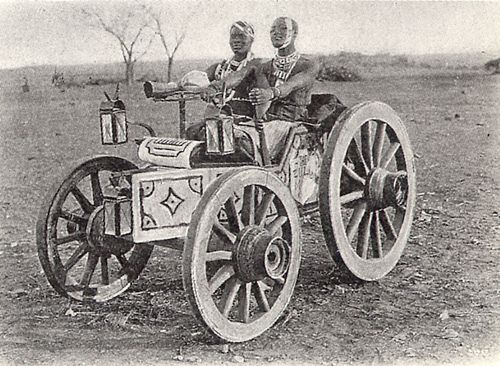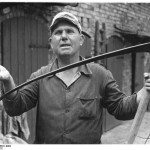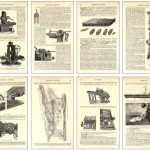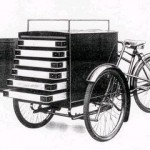“Der ingen skulle tru at nokon kunne bu” is a documentary about Jenny Endresen, an American woman who started a new, extremely low-tech life in an inhospitable part of Norway. It’s not my idea of a low-tech life (I would dress differently, for one thing) but there are some interesting things to see and to hear. Voiceover and questions are in Norwegian, but the woman answers in English. Hat tip to Cristiano Sandels Navarro.
Where no one would believe someone could live
Characteristics of Modern Technique (3)
“The type of work which modern technology is most successful in reducing or even eliminating is skilful, productive work of human hands, in touch with real materials of one kind or another. In an advanced industrial society, such work has become exceedingly rare, and to make a decent living by doing such work has become virtually impossible. A great part of modern neurosis may be due to this very fact; for the human being, defined by Thomas Aquinas as a being with brains and hands, enjoys nothing more than to be creatively, usefully, productively engaged with both his hands and his brains.”
“Modern technology has deprived man of the kind of work that he enjoys most, and given him plenty of work of a fragmented kind, most of which he does not enjoy at all.”
“All this confirms our suspicion that modern technology, the way it has developed, is developing, and promises further to develop, is showing an increasingly inhuman face, and that we might do well to take stock and reconsider our goals.”
Quoted from: “Small Is Beautiful“, E.F. Schumacher, 1973.
Characteristics of modern technique (2)
Characteristics of modern technique (1)
Why Bicycles are Faster than Cars
“The model American male devotes more than 1,600 hours a year to his car. He sits in it while it goes and while it stands idling. He parks it and searches for it. He earns the money to put down on it and to meet the monthly installments. He works to pay for gasoline, tolls, insurance, taxes, and tickets. He spends four of his sixteen waking hours on the road or gathering his resources for it.”
“The model American puts in 1,600 hours to get 7,500 miles: less than five miles per hour. In countries deprived of a transportation industry, people manage to do the same, walking wherever they want to go, and they allocate only 3 to 8 per cent of their society’s time budget to traffic instead of 28 per cent. What distinguishes the traffic in rich countries from the traffic in poor countries is not more mileage per hour of life-time for the majority, but more hours of compulsory consumption of high doses of energy, packaged and unequally distributed by the transportation industry.”
“Man on a bicycle can go three or four times faster than the pedestrian, but uses five times less energy in the process. He carries one gram of his weight over a kilometer of flat road at an expense of only 0.15 calories. The bicycle is the perfect transducer to match man’s metabolic energy to the impedance of locomotion. Equipped with this tool, man outstrips the efficiency of not only all machines but all other animals as well. The bicycle lifted man’s auto-mobility into a new order, beyond which progress is theoretically not possible.”
“Bicycles are not only thermodynamically efficient, they are also cheap. With his much lower salary, the Chinese acquires his durable bicycle in a fraction of the working hours an American devotes to the purchase of his obsolescent car. The cost of public utilities needed to facilitate bicycle traffic versus the price of an infrastructure tailored to high speeds is proportionately even less than the price differential of the vehicles used in the two systems.”
Quoted form “Energy and Equity“, Ivan Illich, 1978. The image was found on the website Old Woodies. Previously: Cars, out of the way. More bicycle posts.
Characteristics of Modern Technique (2)
“The great feat of medieval technics was that it was able to promote and absorb many important changes without losing the immense carryover of inventions and skills from earlier cultures. In this lies one of its vital points of superiority over the modern mode of monotechnics, which boasts of effacing, as fast and as far as possible, the technical achievements of earlier periods, even though the result, as in the case of monotransport by motor car or jet plane alone, may be far less flexible and less efficient than the more diverse and many-paced system which preceded it.”
Quoted from “Pentagon Of Power: The Myth Of The Machine, Vol. II“, Lewis Mumford, 1970.
Characteristics of modern technique (1).
Characteristics of modern technique (3).
Has There Been Progress Since 1250?
“Even in backward mining communities, as late as the sixteenth century more than half the recorded days were holidays; while for Europe as a whole, the total number of holidays, including Sunday, came to 189, a number even greater than those enjoyed by Imperial Rome. Nothing more clearly indicates a surplus of food and human energy, if not material goods. Modern labor-saving devices have as yet done no better.”
Quoted from “Myth of the Machine : Technics and Human Development“, Lewis Mumford, 1967.
Has There Been Progress Since 1250?
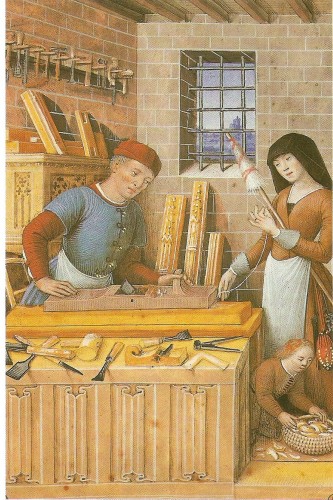 “Fourastié [A French economist] is right in putting the case numerically to dramatize the shortening of the work week and the enormous transformation in living standards and in the qualitative nature of life. The case is indeed simple if 1950 is compared with 1815. But it is no longer quite so simple if 1950 is compared with 1250. It is important to consider, for labor, not only time but intensity.”
“Fourastié [A French economist] is right in putting the case numerically to dramatize the shortening of the work week and the enormous transformation in living standards and in the qualitative nature of life. The case is indeed simple if 1950 is compared with 1815. But it is no longer quite so simple if 1950 is compared with 1250. It is important to consider, for labor, not only time but intensity.”
“It is possible to make a meaningful comparison between the fifteen-hour workday of a miner in 1830 and the seven-hour workday of 1950. But there is no common denominator between the seven-hour day of 1950 and the fifteen-hour day of the medieval artisan. We know that the peasant interrupts his workday with innumerable pauses. He chooses his own tempo and rhythm. He converses and cracks jokes with every passer-by.”
“We cannot say with assurance that there has been progress from 1250 to 1950. In so doing, we would be comparing things which are not comparable. Therefore, it is advisable to limit ourselves to saying that there has been progress since the beginning of the industrial era, which was founded on the breakup and destruction of the non-comparable and vanished old order.”
Quoted from “The Technological Society“, Jacques Ellul, 1964 (p192) / Original work: “La technique ou l’enjeu du siècle”, 1954. The illustration is a detail of “Les quatre états de la société”, a late 15th century painting by Jean Bourdichon.
